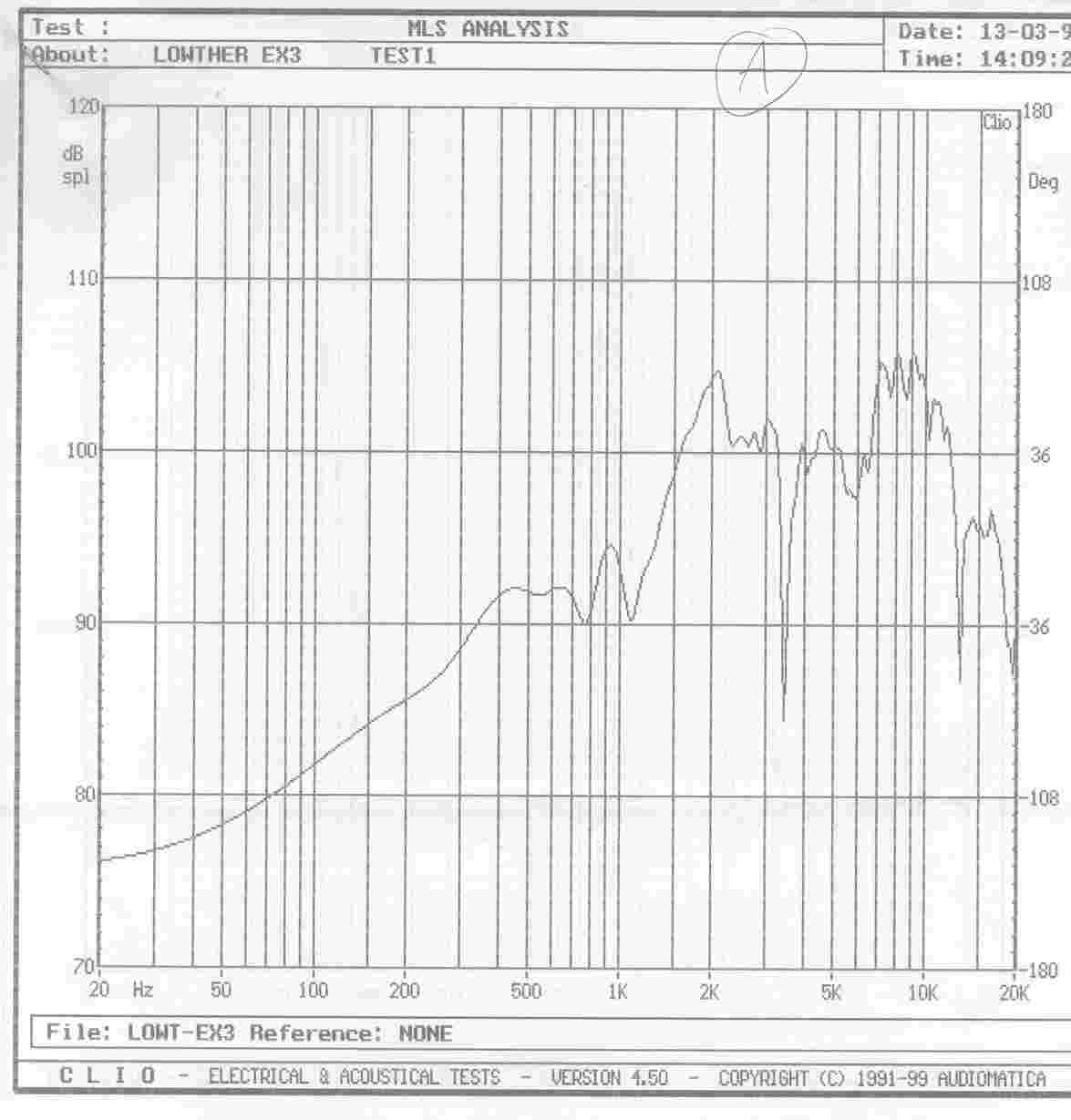
DRIVER B
"FAIL SAFE"
Choosing the right "hi-end" speaker is very diffcult. Even limiting the choice to the DIY world, nowadays there are plenty of projects and drivers to play with.
Starting from the little bit of experience our gruops has reached through these years, we've find very useful these two guidelines:
1) try to listen before embracing the most expensive projects.2) use of course high quality components (ins't it called high end??) but in well known/experimented projects
The first is
a safety guidelines that made us spare a lot of time/money. Once you've
found the speaker of you dream, in our experience it's better to wait a
bit, and make a trip with your best friend (4 ears are better than two)
to listento it in a show room or in a private house.
Better is succeding
to have the speakers you want connected to your amplification system (you
can take it with you) and best..... of course to have everithing
in your listening room.
In many ways this
could be a dream, expecially in the hi-end DIY market, where
very often there are few exemplars built arond. Besides, as results
could change drammaticaly in cosequence of one set of building choices
insteda of another (or can be improved through the path), you can't
always have a final judment on a project.
Always try to take
any decison after a while.
Beside remember
that one great problem when you judge a speaker for the first time
is the "psychological pressure" coming from the enviroment: (from the sales
man, to other people arond and even your friend). Everithing around tries
to keep you away from the truth: that's exactly what your ears are receiving.
So try to "keep you mind cool".
You'll discover
sometimes that the more money/effort isn't worth the result or that
what you've at home was not so bad if not definitely better ;).
The second guidelines
is another "fail safe" advice we've find very useful expecially in DIY
markets, where new projects and lately also new drivers are a monthly costant.
I'ts better to embrace
projects well known among the DIY community, using drivers that are well
experimented. So even if you'll be disappointed with the results,
your speaker will always have little more "market value" or
at least you can re-use the drives in another project. ;).
Everyone knows It's
very difficult to re-sale used speakers of very famous labels, try to figure
out what you can do with a DIY speaker!.
In other world when
you choose a DIY high end project and money matters, is better to be a
"follower" than an "innovator" ;)
I've always keep
on searching in the internet for DIY horns. There are
many nice projects.
I've considered
for some time to "spend the least and have the best" using another
Fostex Dirver.
I made some steps
in building the nice Jericho horn using Fe208 but, at the end I decided
to make a bigger step and use another supplier for the driver. But Who?.
My choice at the end was quite conservative. After listening to several diffent drivers using it, choosing lowther drivers was quite natural.
Having fixed the driver, I found more difficulties searching the "right" cabinet.
Luckyly I had the chance in a couple of Italian Hi-Fi show ("Milano high-end" and "Top Audio"), to compare lot of DIY project using lowthers (Side vivace, Fidelio, Belcanto, Hedlunds, Mauhorns... )At the end choosing Hedlunds for me was easy and in some respect cumpulsory.
I had little space
so I couldn't host a pair of vivace/side vivace in my livingroom.
Besides after having
listened to Fidelio, Belcanto and Mauhorns, I preferred immediately
the sound of a front horn, quicker and very straigt compared to the slower
and softier sound of rear horns.
Hedlunds were clearer, bass wasn't so deep but very quick, thanks to their vertical shape they occupied little space... and.... they looked definitely smart... ;))
So the coiche was another time quite natural.
Next step was the classichal "make or buy" decison. I quick survey on the italian "buy market", discuraged me, there where too many choices but no-one completely satisfaing me and the prices where definitively high: i was asked even 9.000.000 ITL (4.500 euros) for a couple of spekers.
I was turning to
the "make" solution until searching the web for the latest news on the
making process
I found Miroslav, a Croatian DIYer that sold a nicely
veneered version, for a very cheap price.
I quickly contacted
him and in a month I had them in my livingroom ... and today I could
really said Thank you Miroslav and to your woodmaker "kruno",
he did a real "work of art".
Everithing ok then???
well.... no .....I did one *big* error in all that: I had the cabinet ready
before having bought the driver.
The period i received
the cabinet was jenuary or thereabout and te drivers arrived lately in
april.
I leave you imagine
what it means to have two hi-end cabinets in you living room without listening
to them. .. I had *very* hard time then..... :))))))))))))
Next problem was
"wich lowther should I use" ???.
Although Hedlund
were originally designed for DX2, I had the chance to ear a modified version
for PM2a by ikarus. Medium and high frequencies were better but you'd to
modify the rear chamber to allow enough space for the PM2a magnet.
But what about the
new Ex series?.
I did a little survey
in the most famous discussion groups (Audioasylum, Melluish, egroups),
and asked to Hedlund Himself.
He told me that
best known result were with Ex series, also Bert (Doppemberg) comfirmed
that, adding that I could have a big improvement using AER modified version,
but the rear chamber of the horn needed to be a bit re-tuned.
At the end I opted
for new the recently introduced EX3. . This series has smaller magnets
dimension thanks to the use of new rare earts and a new chamber to reduce
the rear emission of medium frequencies.
The latter
is an important detail in hedlunds, as in this foreshortened horn there
is a considerable emission of medium frequencies from the month.
One disadavantage
of the use of these new magnets is that they're very sensible to temperature:
they loose easily their strenght in consequence of thermal shocks.
So beware...
Here are the graph
of the response of the EX3 my supplier (Digitex) gave me:
DRIVER A

DRIVER B
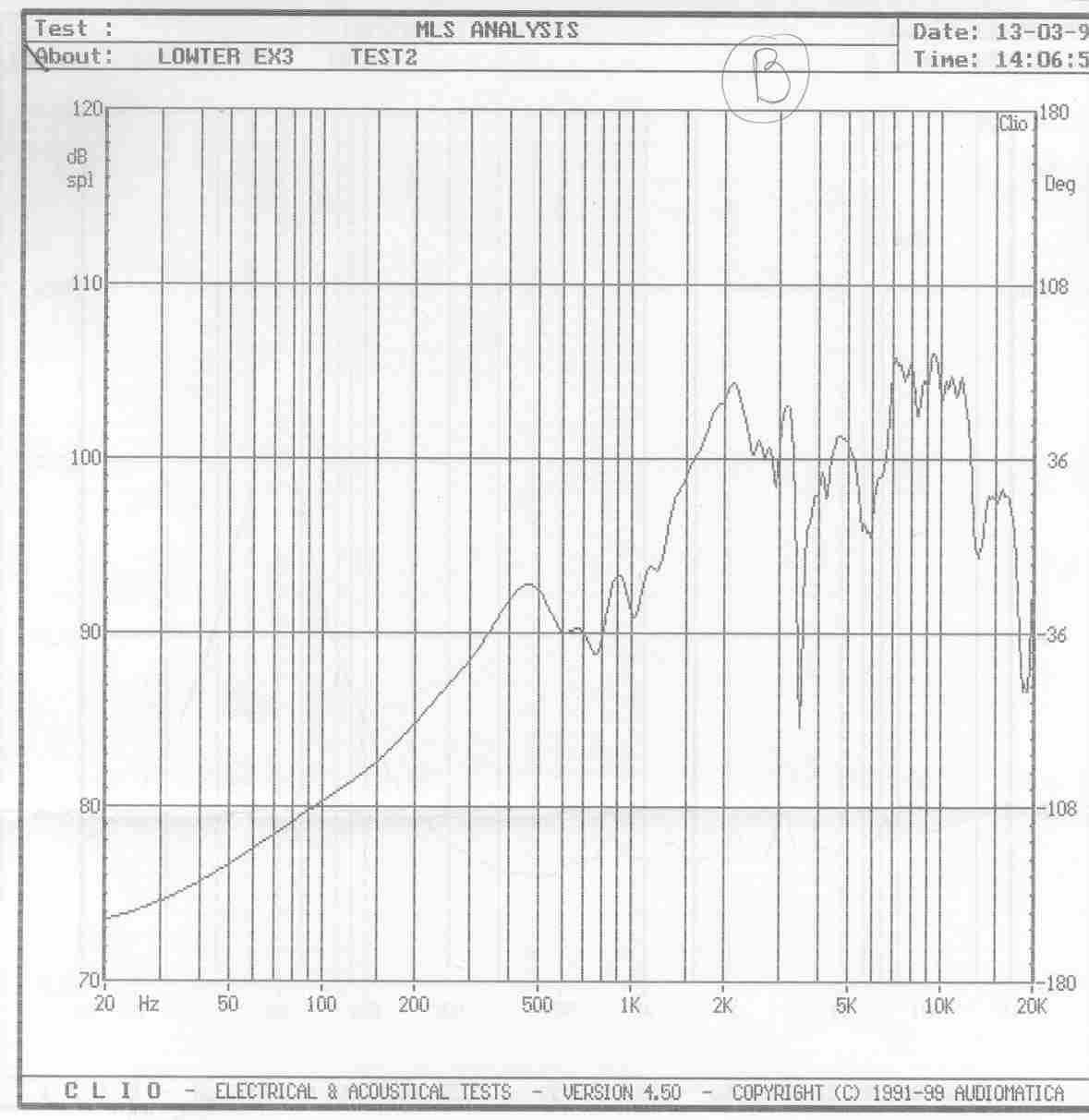
As you can see there are some slight differences among the drivers. but not so high in my opinon: after all they're "hand made"!!!.
Here is also a graph of the impendace response (only for driver A)
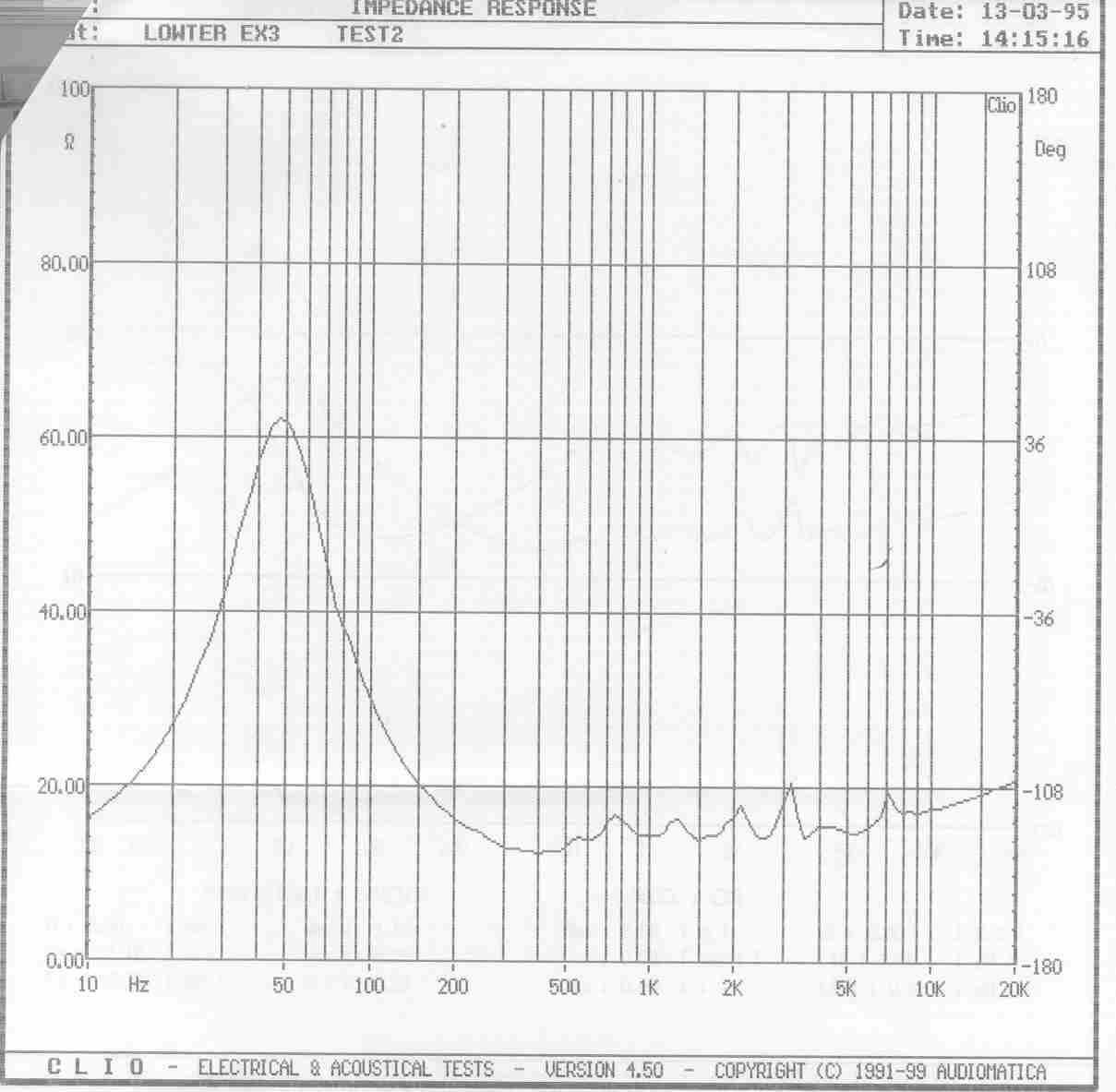
As you can see i've
choosen the 16ohm version with silver coil. This is the best choiche for
SETs. Connecting a 16ohm driver in the 8 ohm taps result in doubling
the load impendance of the output tube. So you'll have less power
but you'll have a great improvement in distortion.
If you put and ex3 inside Hedlund cabinet, you have to do a little reworking to allow little more space fo the rear chamber. Things are very easy and you can do it by yourself.
Simply put a little
paint on the rear chamber of the EX3 and see where it touches the cabinet.
Using a pen draw
a little circular reference line of about the same profile of the
rear chamber.
Then using the drill
dig a little hole taking away the wood that is in excess.
You won't have any problem of runing the speakers or cutting a pass-through hole, as you've to go deep only for 4-5mm and hedlunds are 25mm thick.
Frequently put the
speaker in place and see if is necessary to deepen the hole.
In the following
photos you'll also get a little trick in order to simplify this
put-and-remove fase.
Here are some photos of Andrea creating th hole.:

Here is the result. To avoid powder or little pieces falling from the worked part, It's advisable to fix the surface of the hole painting it with trasparent paint or glue.
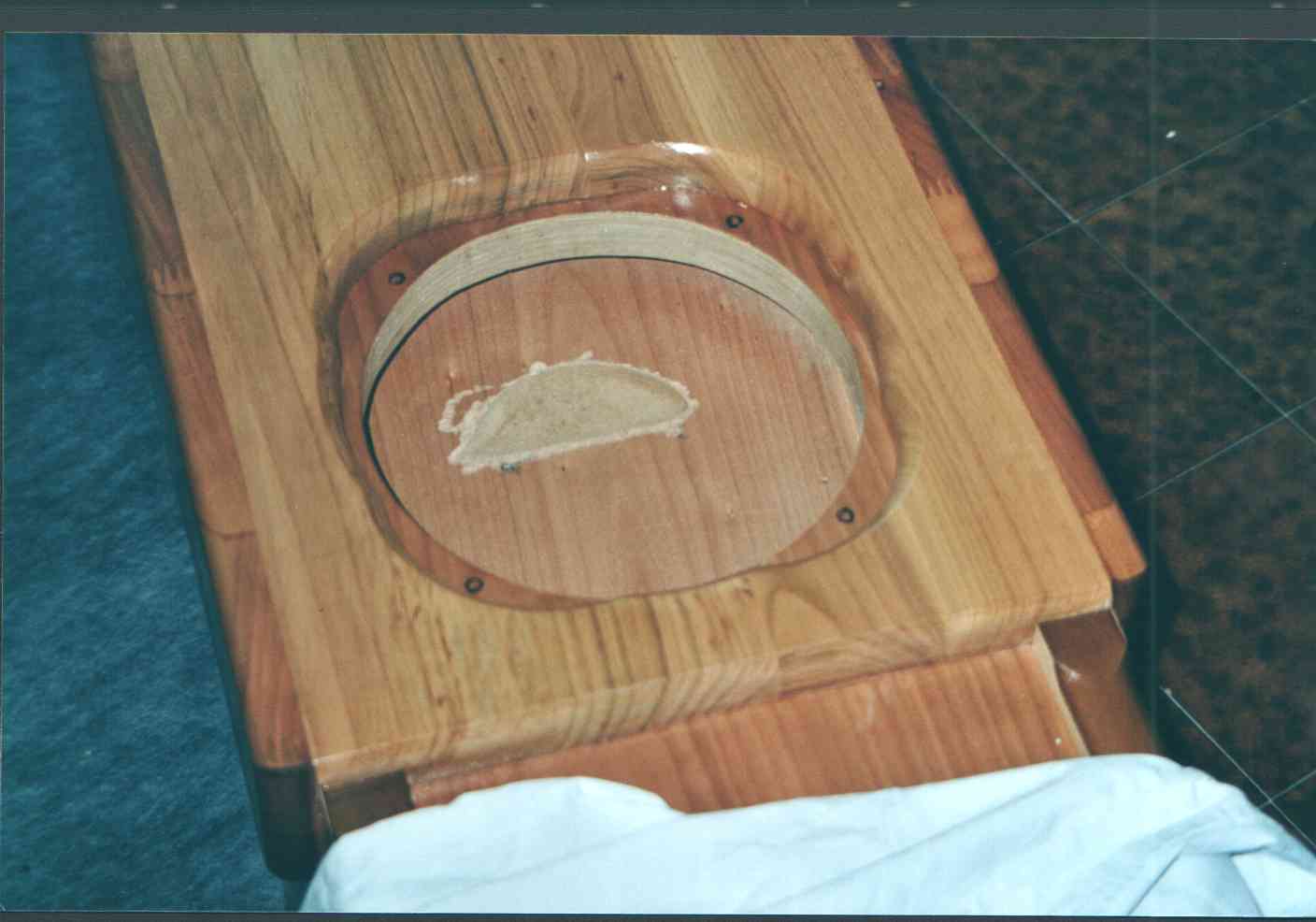
Here is alittle trick
to lie in place the driver without damaging it.
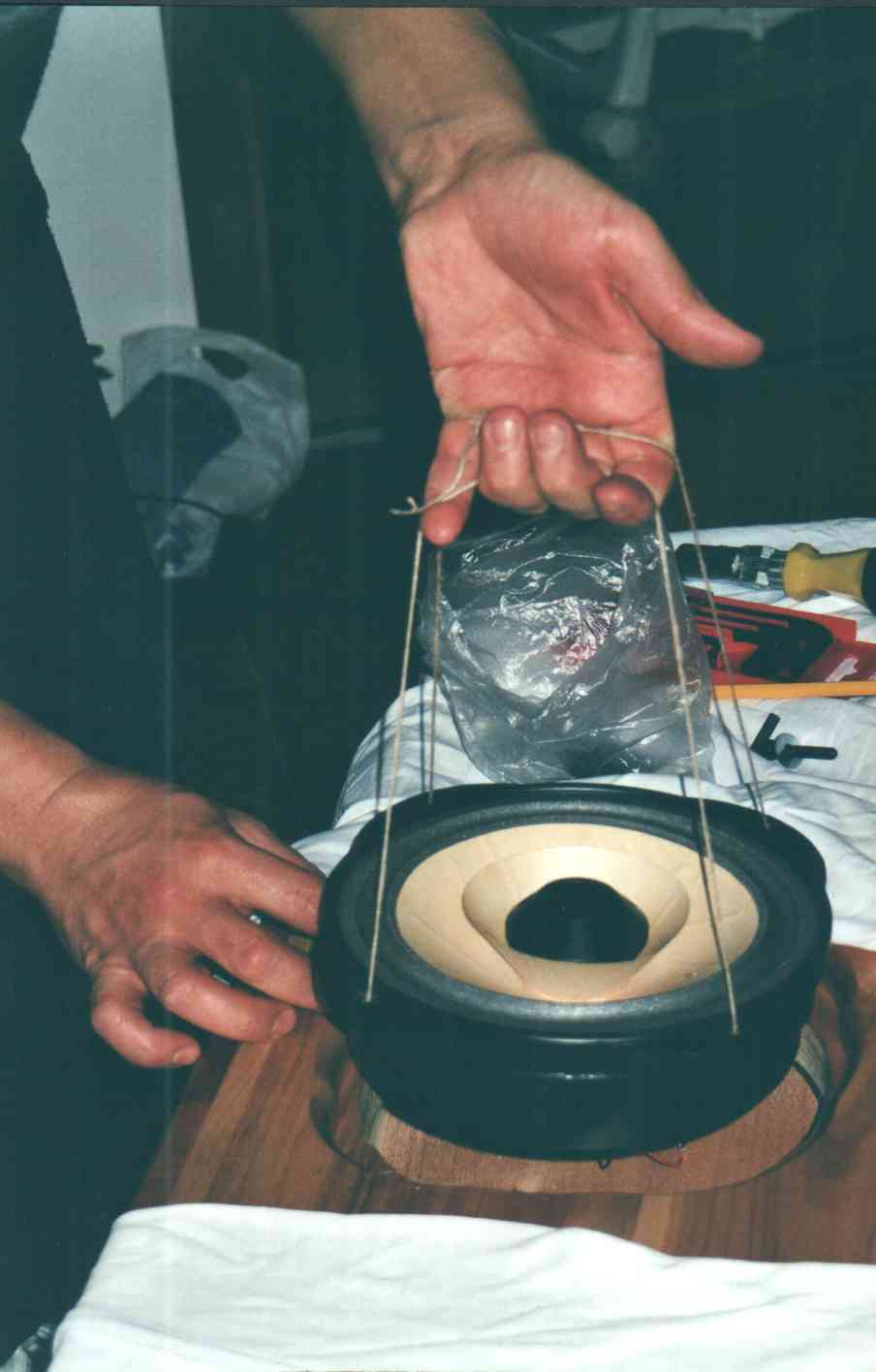
Near the end....
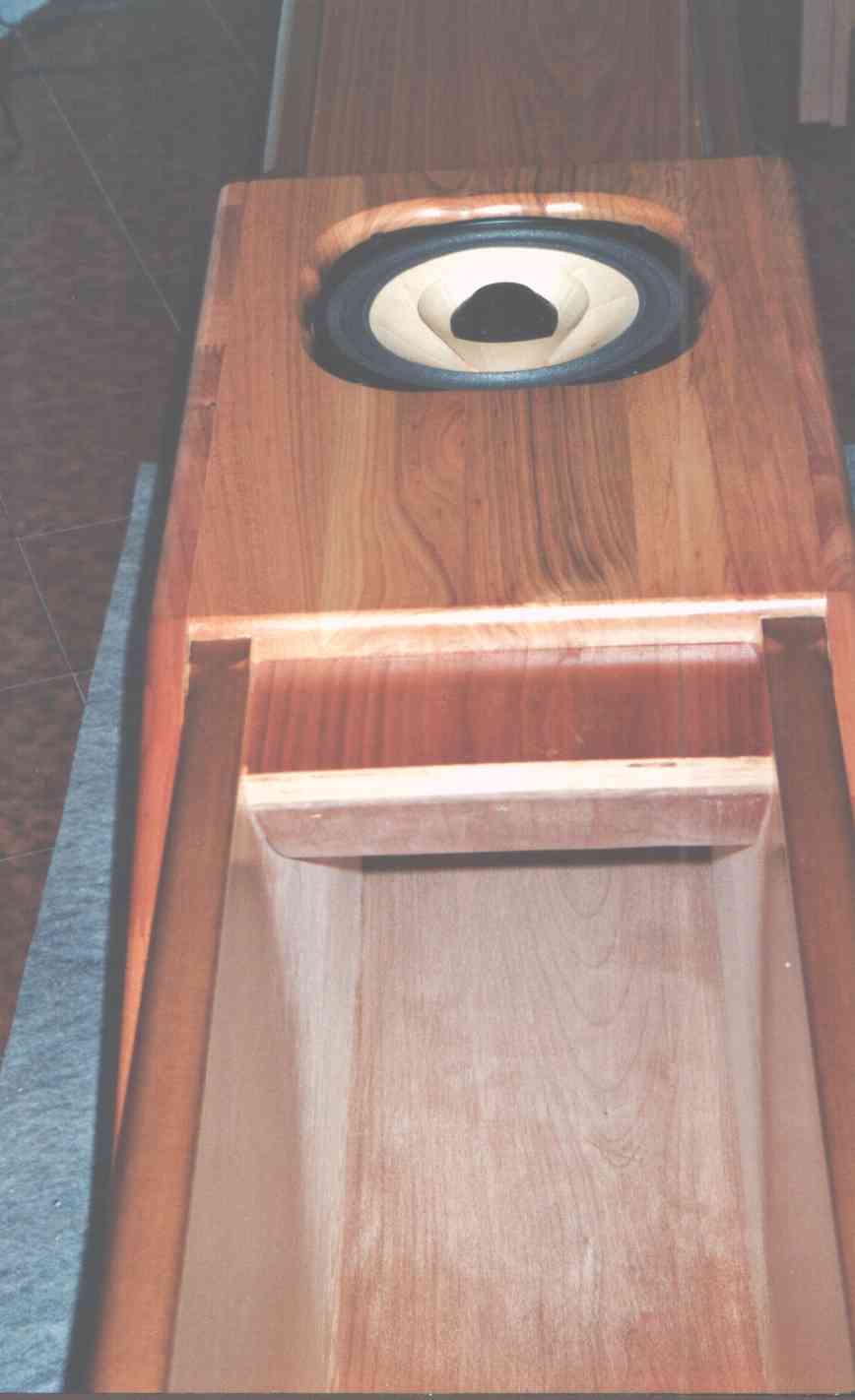
Here is the final
result:
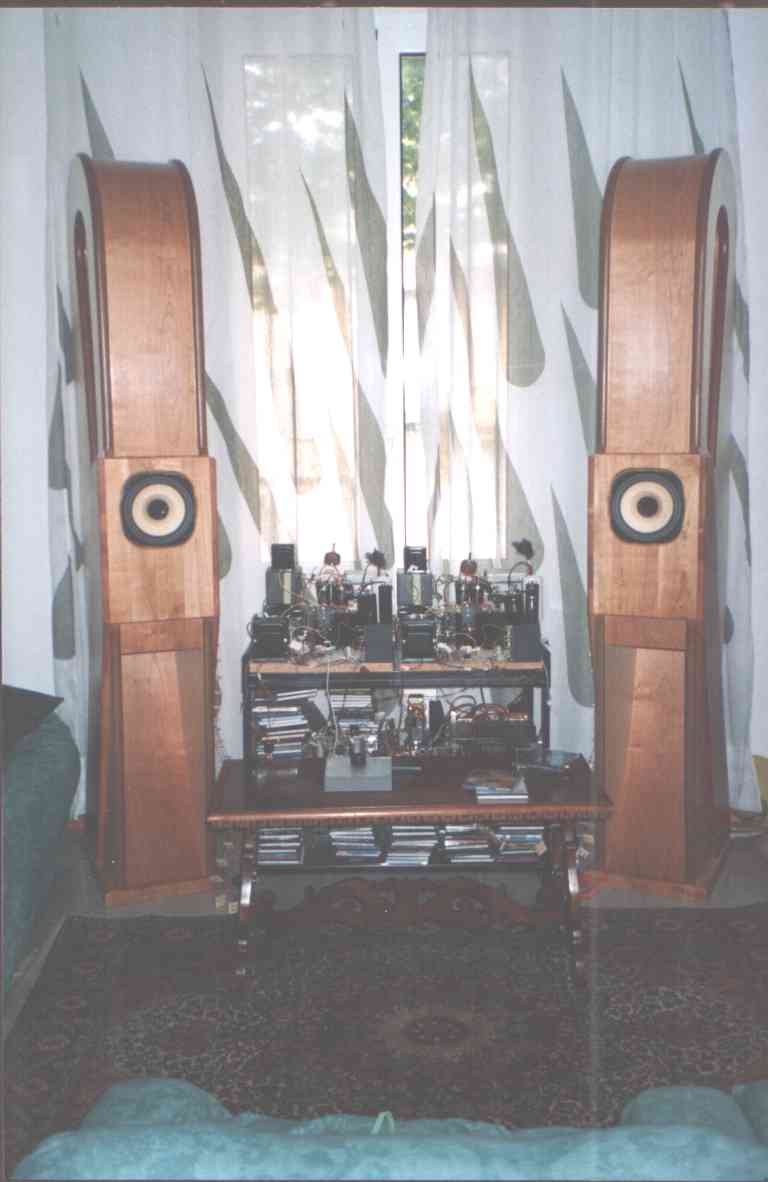
First
Listening Impressions
Frankly it's too
early to have an idea of the real "timbre" of the speaker.
Lowther have a very
long (and controversial) burning-in period.
In our experience:
- First "30" hours: according with manufactuer advices, you need to play at very low volume. In this period You've the idea of dealing with 2 "supertweeters". Sometime you think you're crazy spending so much money for those speakers sounding "like old little japanese radios". Keep cool ;)
- "From 30-100/150 hours".: You can put more power, but sounds come out very "dirty", still all in the high register. You feel there is something improving but with very little steps. This is the hardest period: you realize it's a long way. Remember that burning in period advance if you listen at "normal" level. Listening at very low level slows the process. Computing time try to be honest!
- "From 100 to 200 hours".:Bass start to appear, Voices are improving fast: here is each week more clarity in the sound. Also the "speedness" sensation start to improve. With my couple of Ex3 I'm in this phase now.
- With a couple of PM2a in a Side Vivace cabinet , we've exceeded 700hours of listning time. What became clear as times passes, is that you'll have more balance in the emission and also highs and speed keep improving.
In other terms sound seems more open and natural. Thus, as time passes, we're more and more convinced that the "buring-in" period of this speakers will never end. Someone says they sound best before they got broken for the age!
Some
Last Minute's Tips.
To reduce medium frequencies emission from the mounth of the horn i've used with good result a simply damping soulution in the last part of the horn.
I've prepared a square sheet of cork dimesion 225x900mm. I 've bought those sheet of corks used to insolate room from noise, these are about 3-4mm thick.
On the cork
using bi-adesive strips I've put a layer of those loose fluff that
is sold in "fabric houses", and used to fill winter dress of covers. Thickness
is about 15-20mm.
Instead, you can use the fluff is used in kitchens for adsorbing
smoke in the fans above the fire places.
This combo is placed right in the last part of the mouth. Remeber to lay it right against all the curve pressing it gently. It will hold in place without any other trick thank to the friction of the cork against the wood.
With this tips, sound seems to slow and arretrate a bit. The "presence" effect is reduced, music seem "softer" but -as a result- you'll be surprised by the bass richness.
That's all folks,
Listen and ENJOY!